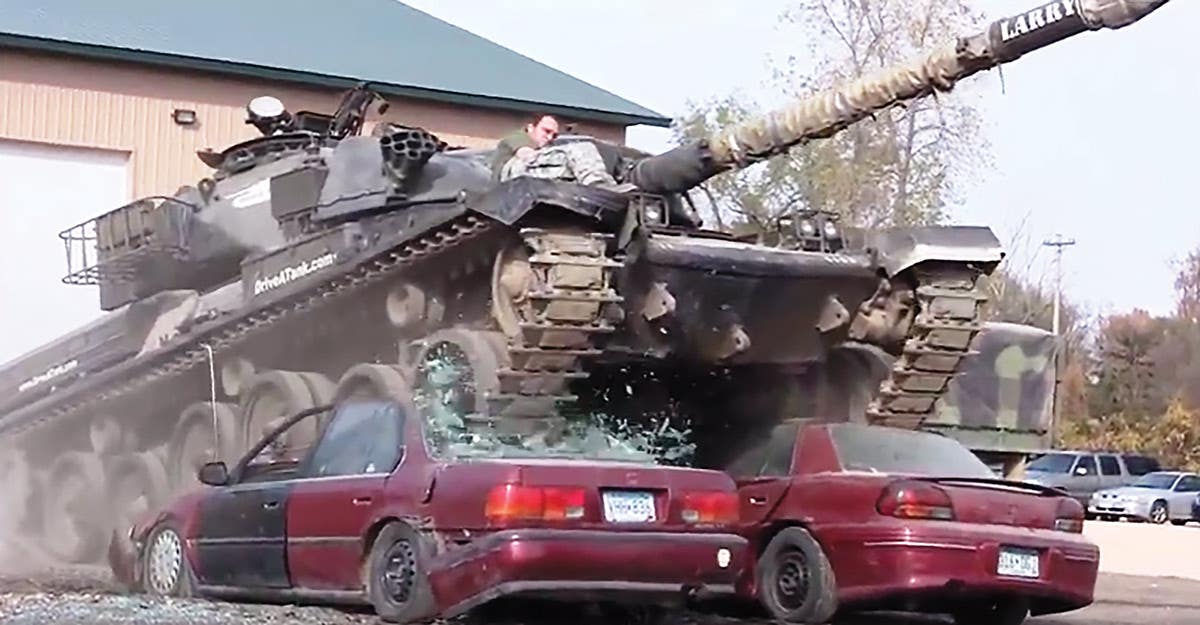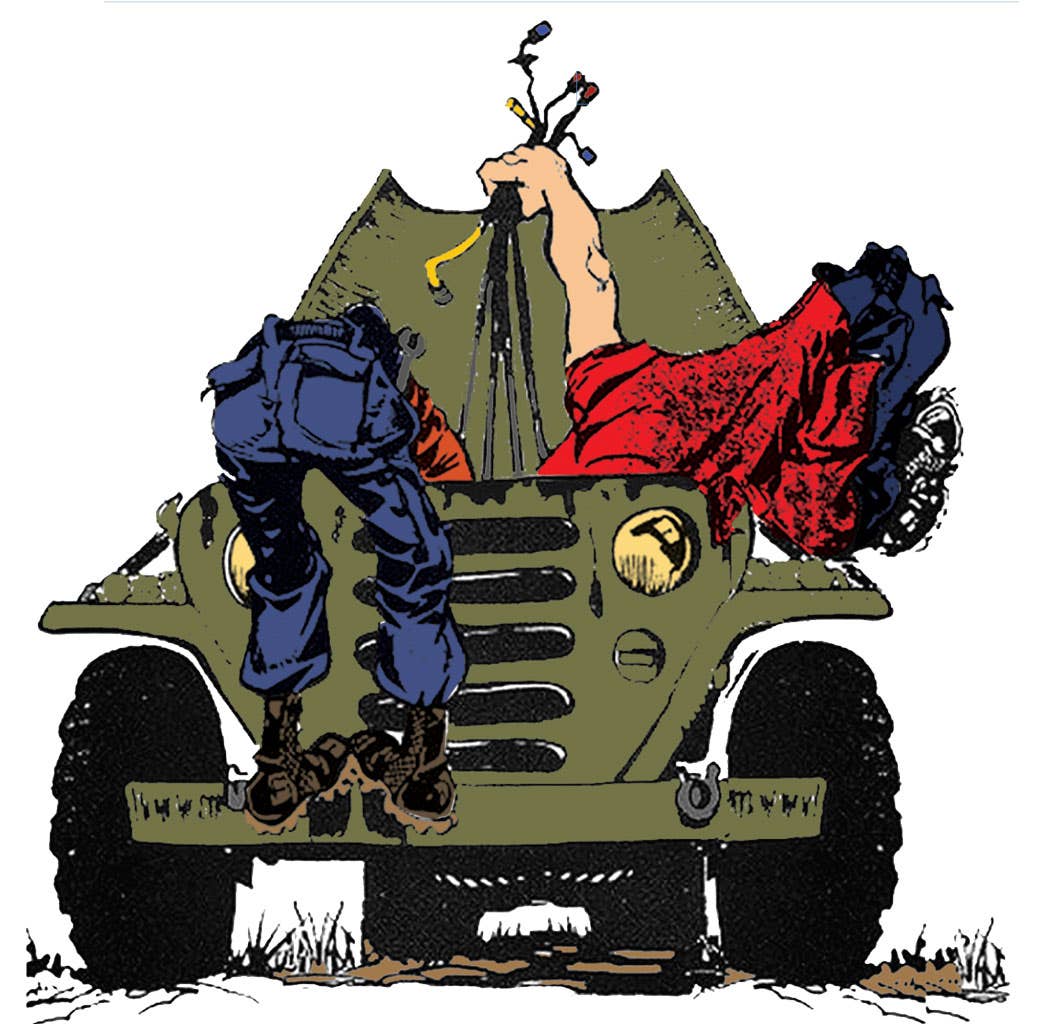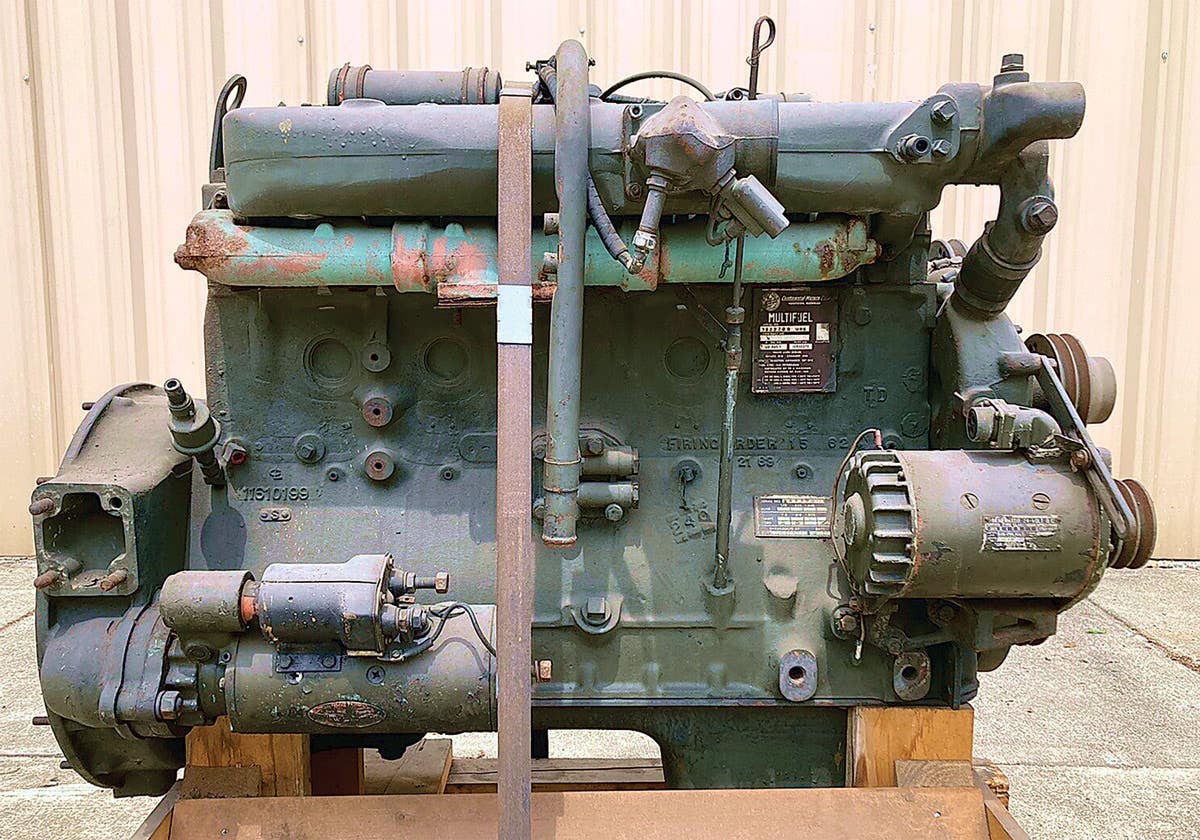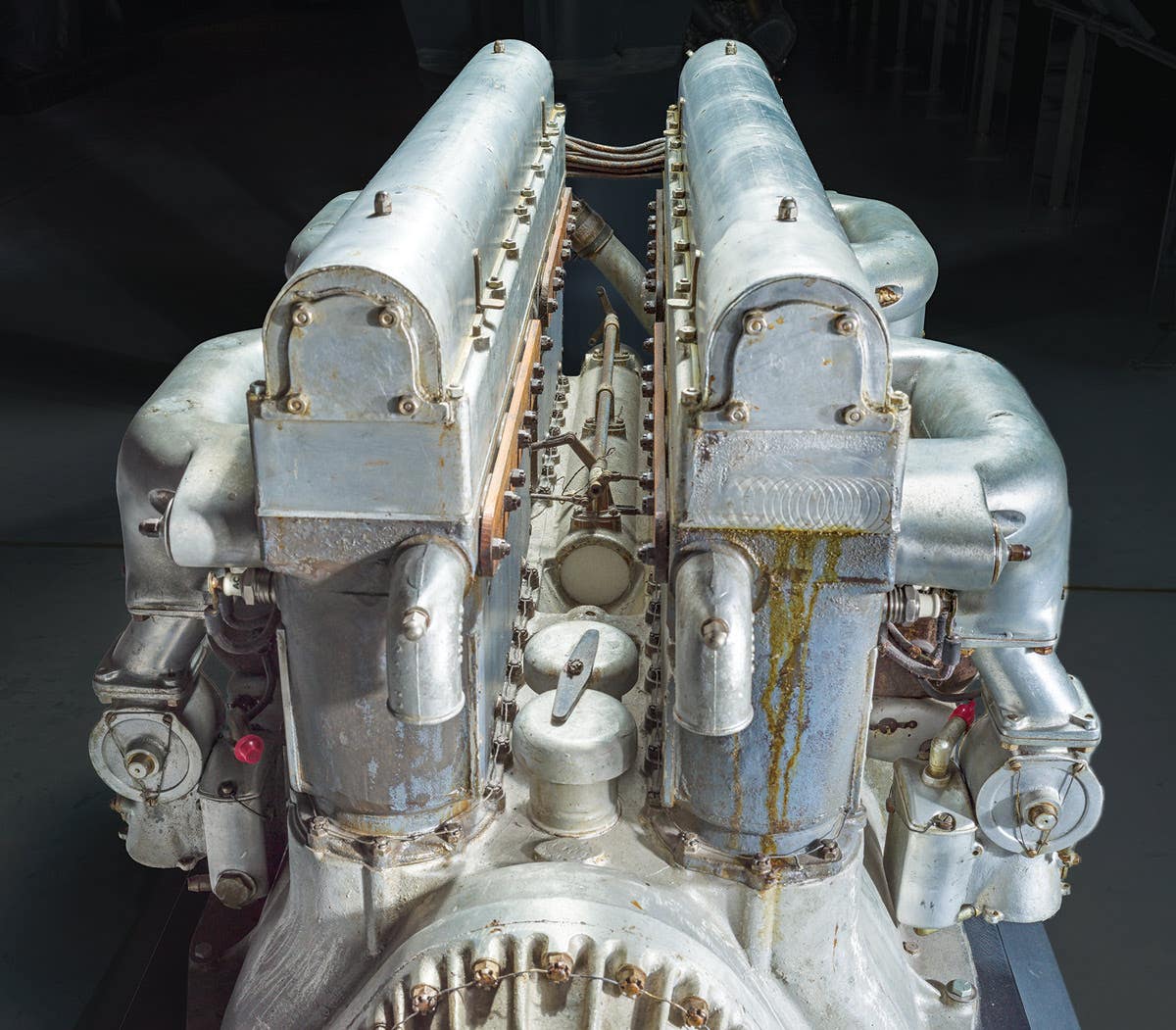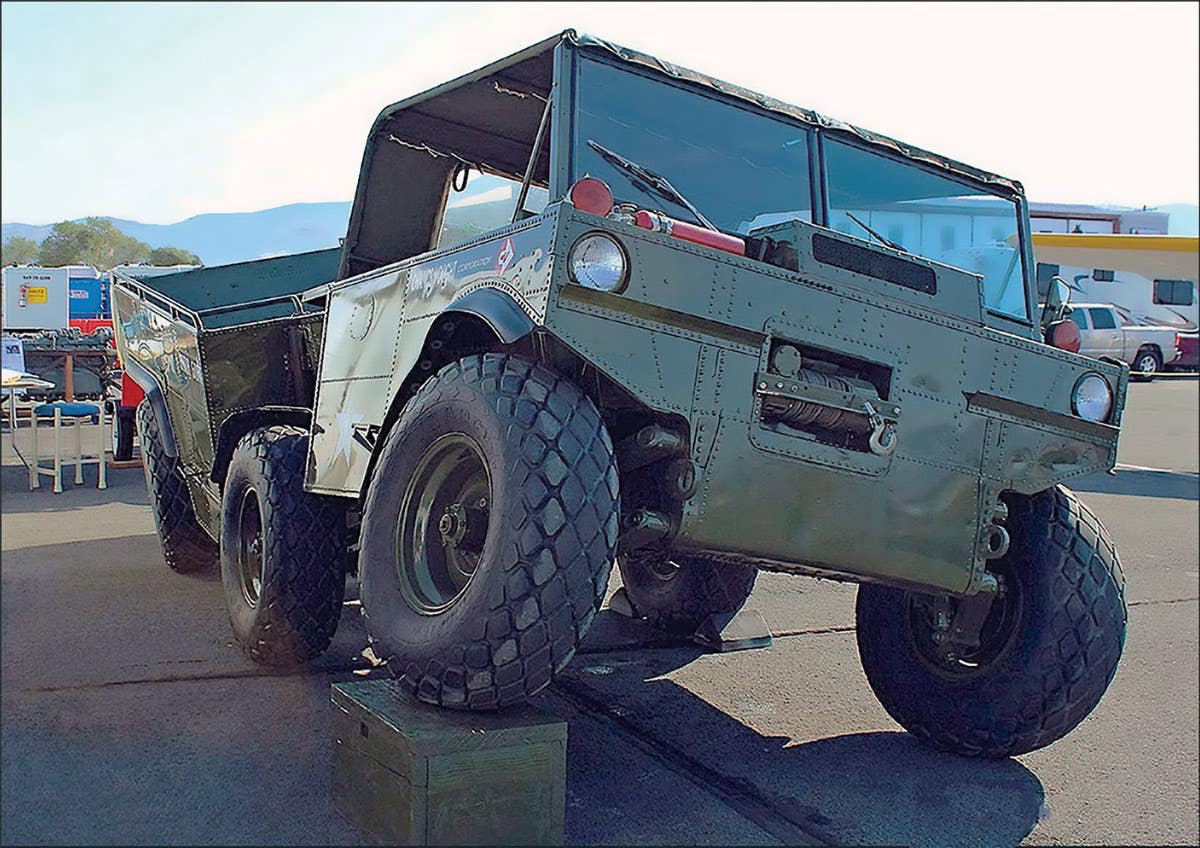Historic Military Vehicles Under Fire in Wisconsin
Grass-roots effort trying to protect private ownership.
The State Of Wisconsin no longer registers former military vehicle for use by collectors. A grass-roots effort of military vehicle clubs has produced a Bill to present to the Transportation Committee. BILL LRB 3284/4 “Registration of Historic Military Vehicles" seeks to protect the private ownership and use of historic military vehicles within the State of Wisconsin.
Wisconsin residents are asked to contact their representatives BEFORE NOVEMBER 12, 2009, and ask for their support of BILL LRB 3284/4 “Registration of Historic Military Vehicles". If enough support is registered, the bill will be sent the Transportation Committee for consideration. DON’T DELAY!
Below are some frequently asked questions about the circumstances that led up to the drafting of the Bill and the Bill itself. This information is the result of meetings with state legislators, attorneys, WI DOT managers and military vehicle organizations.
1) Why is the State Of Wisconsin no longer registering former military vehicles?
a. There has been a huge increase in the volume of applications to register “non conforming” vehicles of many types. The safety capability of these vehicles is undocumented.
b. Included in that “non conforming” category are motorized scooters, pocket bikes, Gators & commercial Mules, lawn tractors, ‘medium speed vehicles’, mini-bikes, Barbie cars, go-karts, golf carts, race cars, Japanese mini-trucks and military surplus vehicles.
c. Existing WI statute 341.10(6) states that WI shall not register any vehicle designed for off road use or that does not comply with Federal Regulations s114. (s114 is NHTSA) (read the full text)
d. With a newly networked and computerized data system, the state is now better equipped than in the past to review vehicle applications. The DOT has begun to enforce the existing law which was not done uniformly in the past.
2) My Military Vehicle seems pretty safe, what’s the big deal?
a. There is currently no known public data base to support the safety record of former military vehicles operated in WI. Law enforcement crash reports do not separate data other than by plate type.
b. The new HMV bill would put all the MV’s in a separate category and would build a data base that can be used in the future to support a lobby effort for expanded use of HMV’s.
3) If the Army can operate on public highways, why can’t we drive the same trucks?
a. The military operates under different federal rules. The HMV’s that we propose to operate are for the most part “tactical vehicles” designed to support a combat mission.
b. A simple WWII Jeep may seem no different than a civilian SUV but any new law must cover ALL ex-military vehicles, small and large, armored and thin skin types, vintage and modern.
c. Military tactical vehicles by there mission profile make safety compromises such as non standard bumper heights, impact hazards in the operators compartment and driver visibility.
4) How come we don’t sue the State of WI for unrestricted or at least collector use?
a. The state is enforcing an existing law.
b. Owners and collectors are currently not sufficiently organized or funded to mount a legal challenge to the “off road design” definition. It would require thousands of dollars in legal fees and lectors could still loose.
5) How come the MVPA doesn’t fight this at the federal level?
a. A challenge at the federal level was considered.
b. The cost of such a challenge is astronomical.
c. With a challenge about use, the Department of Defense could change policy and require complete demilitarization of all future vehicle sales.
d. Title and registration is a state issue.
6) Why is the proposed bill so restrictive?
a. The state DOT will compromise a total ban on HMV’s only if the safety exposure to other motorists is reduced by limiting HMV use.
b. If the legislature would enact a new statute that would keep the HMV registrations “as is” under collector or regular plates, the DOT secretary will lobby the Governor to veto such a bill.
c. The bill we have crafted to allow owners to keep driving, LRB3284/4 “Registration of Historic Military Vehicles” is the result of input from vehicle clubs, owners, legislators and the DOT.
7) What’s the difference between getting a vehicle title and getting a vehicle registration?
a. Issue of a “Title” document conveys ownership. “Registration” allows operation on public highways.
b. The proposed bill LRB3284/4 addresses registration only.
c. Most applications received by the DMV request both documents in a single transaction. The DMV has been inconsistent in issuing these documents. The DOT agrees, that with the correct supporting documents, the state must legally issue title to demonstrate ownership.
d. We are addressing the registration issue with the legislature and will address the title issue with the DOT after the registration issue.
8) Why can’t we just keep our MV’s with the same collector plate we have now?
a. Vehicle use under the current collector plate law, allows any vehicle to be used as a daily driver (except in Jan and can’t haul more than 500 lbs). That includes HMV’s such as armored cars and oversize tactical trucks which are the safety concern of the state
9) I thought that only vehicles made after 1968 were affected?
a. In 2009 the DOT proposed an administrative rule called “Trans 123” which was intended to address the issue of all “Non Conforming” vehicles thru the administrative process. That rule, as written by the DOT pointed to the federal safety requirements of National Highway Transportation Safety Act (NHTSA) of 1966 which took effect with 1968 model vehicles.
b. Trans 123 is on hold until the current HMV legislative proposal is addressed. The proposed bill would remove HMV’s from the Trans 123 rule proposal in the future.
c. The legislative bill we propose will create a new that takes precedence over an administrative rule. However, to create a general law, it must cover all former military vehicle. Past, present and future without regard to individual vehicle years or models.
10) What is the difference between Imported and US military vehicles?
a. Imported vehicles must comply with the NHTSA until they are 25 years old. Foreign imports more than 25 years old are exempt from federal safety regulations.
b. The requirement in the proposed HMV bill to only allow imported HMV’s over 25 years old is to synchronize with federal import law. American built HMV’s that were used by foreign governments and returned to the US may be considered “Imported”.
c. The proposed bill LRB3284/4 allows any US produced military vehicle because the actual model year is often not available and current government sales sometimes lack model year or may list vehicles with rebuild dates and not model year.
d. The state registration forms will be simplified for US built HMV’s by dropping the requirement to establish a model year.
11) What if I don’t change my registration to the new Historic Military Vehicle license plate?
a. The DOT will not issue any warning notice to existing registrations.
b. HMV owners will be allowed a reasonable amount of time after the new HMV plates are available to apply and receive them. Probably 12 months.
c. After that it is a law enforcement issue. The fine for an unregistered vehicle is a $180 citation.
12) What happens to the “collector” plates I have now?
a. Collector plates are owned by the individual and will be retained by the owner.
b. They can be used on other qualified collector vehicles you may own now or in the future with a change in collector registration application.
13) If my MV is already registered and I apply for the new license, do I have to pay another fee?
a. No, the state can not charge twice for registration of the same vehicle. HMV owners with existing registrations will be required to apply for the new Historic Military Vehicle plate. The plate will be provided at no charge.
b. Refunds for previous registrations are not provided by the DMV.
14) I don’t understand the new fees for HMV registration?
a. Since the HMV proposal has restrictions for use, the fee for future registrations will be kept low at a one time fee of $5 per vehicle. The same as the current Wisconsin Antique plate
b. The cost of development for any new “special” plate that any group proposes to the state is $11,800. This is the cost of developing new application forms, computer language and programming and implementing the change.
c. Since the HMV owners did not ask for the new plate, the bill proposal LRB3284/4 was written to have the state fund the development cost and be repay by charging an additional $25 fee on any new HMV registrations until the $11,800. cost is retired.
d. A new registration will be $5 + $25 = $30 total. The fee returns to $5 per registration after the fund is repaid the $11,800.
The information in this document is accurate at the time it was produced. Since the legislation is pending and the final bill outcome may be revised, the information presented in the FAQ’s is subject to change without notice.
To learn the latest updates and status of the Bill or to study the entire Bill as proposed, read the consortium’s blog at: http://wihmvbill.blogspot.com . A copy of the Bill is also provided below.
2009 Bill LRB3284/4
“Registration of Historic Military Vehicles”.
AN ACT to amend 25.40 (1) (a) 3., 84.59 (2) (b), 341.10 (6), 341.27 (1) and 347.02
(5); and to create 341.10 (6m), 341.14 (4u) and 341.269 of the statutes; relating to: registration of former military vehicles.
Analysis by the Legislative Reference Bureau
Under current law, an owner of a motor vehicle that is of model year 1945 or earlier may register the vehicle as an antique vehicle. Antique vehicles may be driven only for special occasions such as display and parade purposes or for necessary testing, maintenance, and storage purposes. Also under current law, the Department of Transportation (DOT) must refuse registration of any vehicle that is originally designed and manufactured for off−highway operation unless the vehicle meets certain federal motor vehicle safety standards.
This bill allows former military vehicles to be registered in a manner similar to antique vehicles, with similar operating restrictions. The bill defines a former military vehicle as a vehicle, including a trailer but excluding a tracked vehicle, that was manufactured for use in any country’s military forces and is maintained to accurately represent its military design and markings, regardless of the vehicle’s size or weight. A former military vehicle may be registered as a “historic military vehicle” if it is at least 25 years old and has been imported into the United States from another country or if it has not been imported and is of any age. It is the applicant’s burden to show that a vehicle is eligible for registration as a historic military vehicle.
DOT must issue for the vehicle special plates of a distinctive design that show that the vehicle is registered as a historic military vehicle. The applicant must pay a one−time $5 registration fee and there is no fee for registration renewal. In addition, the applicant must pay a $25 processing fee, to cover the initial costs of production of special plates, until DOT has recovered $11,800 for its costs of plate development.
However, if the vehicle is currently registered by DOT under another registration category, the vehicle may be registered as a historic military vehicle without payment of any fee.
The bill also prohibits DOT from registering any vehicle that was manufactured for use in any country’s military forces and that does not meet federal motor vehicle safety standards. However, the bill allows DOT to register a former military vehicle as a historic military vehicle, or as a municipal or county vehicle operated in the public service, even if the vehicle was originally designed and manufactured for off−highway operation, does not meet federal motor vehicle safety standards, and was manufactured for use in a country’s military forces. For further information see the state fiscal estimate, which will be printed as an appendix to this bill.
The people of the state of Wisconsin, represented in senate and assembly, do enact as follows:
SECTION 1. 25.40 (1) (a) 3. of the statutes, as affected by 2009 Wisconsin Act 28, section 669, is amended to read:
25.40 (1) (a) 3. Revenues collected under ss. 341.09 (2) (d), (2m) (a) 1., (4), and
(7), 341.14 (2), (2m), (6) (d), (6m) (a), (6r) (b) 2., (6w), and (8), 341.145 (3), 341.16 (1) (a) and (b), (2), and (2m), 341.17 (8), 341.19 (1) (a), 341.25, 341.255 (1), (2) (a), (b), and (c), and (5), 341.26 (1), (2), (2m) (am) and (b), (3), (3m), (4), (5), and (7), 341.264 (1), 341.265 (1), 341.266 (2) (b) and (3), 341.268 (2) (b) and (3), 341.269 (2) (b), 341.30 (3), 341.305 (3), 341.308 (3), 341.36 (1) and (1m), 341.51 (2), and 342.14, except s. 342.14 (1r), that are pledged to any fund created under s. 84.59 (2).
SECTION 2. 84.59 (2) (b) of the statutes, as affected by 2009 Wisconsin Act 28, section 1927, is amended to read: 84.59 (2) (b) The department may, under s. 18.562, deposit in a separate and
distinct special fund outside the state treasury, in an account maintained by a trustee, revenues derived under ss. 341.09 (2) (d), (2m) (a) 1., (4), and (7), 341.14 (2),
BILL SECTION 2
(2m), (6) (d), (6m) (a), (6r) (b) 2., (6w), and (8), 341.145 (3), 341.16 (1) (a) and (b), (2), and (2m), 341.17 (8), 341.19 (1) (a), 341.25, 341.255 (1), (2) (a), (b), and (c), and (5), 341.26 (1), (2), (2m) (am) and (b), (3), (3m), (4), (5), and (7), 341.264 (1), 341.265 (1), 341.266 (2) (b) and (3), 341.268 (2) (b) and (3), 341.269 (2) (b), 341.30 (3), 341.305 (3), 341.308 (3), 341.36 (1) and (1m), 341.51 (2), and 342.14, except s. 342.14 (1r), and from any payments received with respect to agreements or ancillary arrangements entered into under s. 18.55 (6) with respect to revenue obligations issued under this section. The revenues deposited are the trustee’s revenues in accordance with the agreement between this state and the trustee or in accordance with the resolution pledging the revenues to the repayment of revenue obligations issued under this section. Revenue obligations issued for the purposes specified in sub. (1) and for the repayment of which revenues are deposited under this paragraph are special fund obligations, as defined in s. 18.52 (7), issued for special fund programs, as defined in s. 18.52 (8).
SECTION 3. 341.10 (6) of the statutes is amended to read:
341.10 (6) The vehicle is originally designed and manufactured for off−highway operation unless the vehicle meets the provisions of s. 114 of the national traffic and motor vehicle safety act of 1966, as amended, except as otherwise authorized by the statutes. This subsection does not apply to former military
vehicles, as defined in s. 341.269 (1), for which the department receives an
application, and which are eligible, for registration under s. 341.269 or, with respect to a county or municipality, under s. 341.26 (2m).
SECTION 4. 341.10 (6m) of the statutes is created to read:
341.10 (6m) The vehicle was manufactured for use in any country’s military forces and does not meet federal motor vehicle safety standards. This subsection does not apply to former military vehicles, as defined in s. 341.269 (1), for which the department receives an application, and which are eligible, for registration under s. 341.269 or, with respect to a county or municipality, under s. 341.26 (2m).
SECTION 5. 341.14 (4u) of the statutes is created to read:
341.14 (4u) For historic military vehicles as specified in s. 341.269. The special
plate for a historic military vehicle that is a motorcycle shall be the same size as the usual registration plate for a motorcycle that is not a historic military vehicle.
SECTION 6. 341.269 of the statutes is created to read:
341.269 Historic military vehicles; registration, plates, use. (1) In this section, “former military vehicle” means a vehicle, including a trailer but excluding a tracked vehicle, that was manufactured for use in any country’s military forces and is maintained to accurately represent its military design and markings, regardless of the vehicle’s size or weight.
(2) (a) Any resident of this state who is the owner of a former military vehicle that is at least 25 years old at the time of making application for registration and has been imported into the United States from another country, or that is any age and has not been imported into the United States, may upon application register the vehicle under this section as a historic military vehicle upon payment of the fees specified in par. (b). The applicant has the burden of providing evidence satisfactory to the department that the vehicle may be registered under this section, including, if applicable, providing documentation demonstrating that a former military vehicle which is less than 25 years old was manufactured for U.S. military forces and was never imported.
(b) 1. Except as provided in subd. 3., the fee to register a vehicle under this section is $5. Upon application, the owner may reregister the vehicle under this section without the payment of any additional fee.
2. Except as provided in subd. 3., in addition to the fee under subd. 1., an applicant for initial registration under this section shall pay a one−time processing fee of $25 for the initial costs of production of the special plates under par. (c).
3. The department may not collect any fee under subd. 1. or 2. if, at the time of application for registration under this section, the vehicle is currently registered
under another provision of this chapter. The department shall cease collection of the fee under subd. 2. when the department has collected a total of $11,800 from either, or a combination of both, of the following sources:
a. The fee under subd. 2.
b. Any gift or contribution received by the department for purposes of funding the initial costs of production of the special plates under par. (c).
(c) The department shall furnish the owner of the vehicle registered under this section with registration plates of a distinctive design in lieu of the usual registration plates, and those plates shall show that the vehicle is registered as a historic military vehicle. The department shall specify the design for the registration plates furnished under this paragraph after consulting with a group or organization chartered in this state that is interested in historic military vehicles.
(3) A vehicle registered under this section may only be used for special occasions such as display and parade purposes, including traveling to and from such events, and for necessary testing, maintenance, and storage purposes.
(4) A motorcycle may be registered under this section if all of the requirements for registration specified in this section are satisfied.
(5) Unless inconsistent with this section or s. 341.10 (6), the provisions applicable to other motor vehicles apply to vehicles registered under this section as historic military vehicles.
SECTION 7. 341.27 (1) of the statutes is amended to read:
341.27 (1) All automobiles, other than those that may be registered under s.341.26 (2), 341.265, 341.266 or, 341.268, or 341.269 or are required by s. 341.29 to be registered on a calendar−year basis, shall be registered by the department according to the system of registration prescribed by this section.
SECTION 8. 347.02 (5) of the statutes is amended to read:
347.02 (5) If a vehicle registered under s. 341.25 (1) (a), 341.265 or, 341.266,
or 341.269 has equipment which was designated by the manufacturer as optional
equipment in the model year the vehicle was manufactured, it is not necessary for such equipment to be in operating condition unless it replaces equipment which is required by law to be both present and functioning.
SECTION 9.0 Nonstatutory provisions.
(1) Notwithstanding section 16.42 (1) (e) of the statutes, if this subsection takes effect in fiscal year 2010−11, in submitting information under section 16.42 of the statutes for purposes of the 2011−13 biennial budget bill, the department of transportation shall submit information concerning the appropriation under section 20.395 (5) (cq) of the statutes as though the total amount appropriated under section 20.395 (5) (cq) of the statutes for the 2010−11 fiscal year was $11,800 less than the total amount that was actually appropriated under section 20.395 (5) (cq) of the statutes for the 2010−11 fiscal year.
SECTION 10.0Fiscal changes.
(1) In the schedule under section 20.005 (3) of the statutes for the appropriation to the department of transportation under section 20.395 (5) (cq) of the statutes, as affected by the acts of 2009, the dollar amount is increased by $11,800 for the fiscal year in which this subsection takes effect to increase funding for special registration plates associated with historic military vehicles.
SECTION 11.0Initial applicability.
(1) This act first applies to applications received by the department of transportation on the effective date of this subsection.
SECTION 12.0Effective date.
(1) This act takes effect on the first day of the 7th month beginning after publication.
CLICK HERE to share your opinions in the Militaria Message Board



